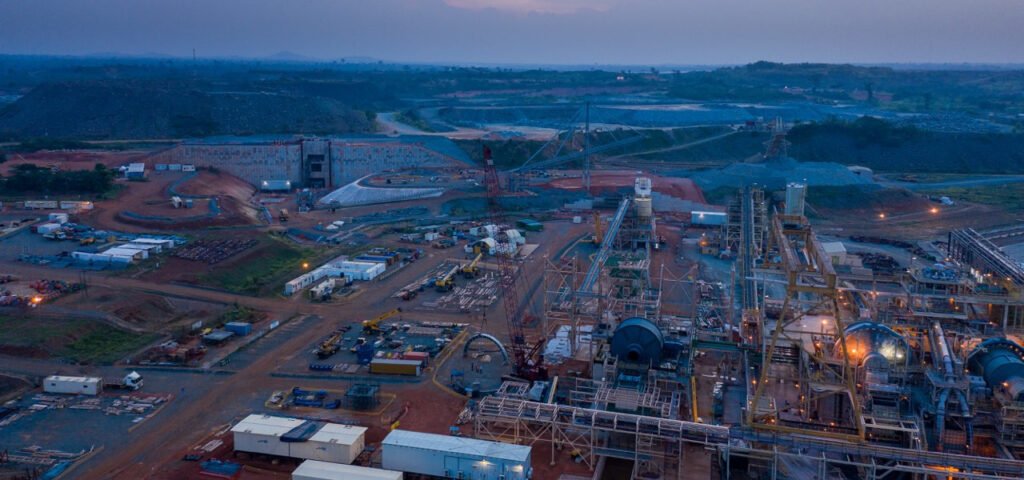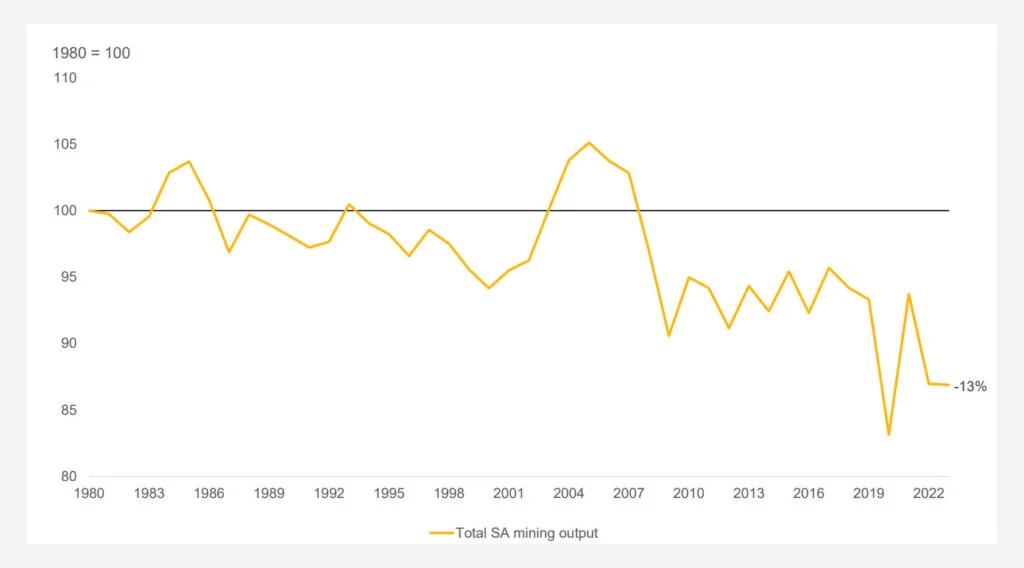South Africa mining recession
South Africa Mining Recession: Causes, Impacts, and Pathways to Recovery
South Africa’s mining industry, once a global powerhouse, has faced significant challenges in recent years, culminating in periods of recession . Declining production, regulatory uncertainty, labor disputes, and global market dynamics have all contributed to the downturn. This contraction has had far-reaching consequences for the economy, employment, and communities reliant on mining. In this blog post, we will examine the causes of South Africa’s mining recession, its impacts, and potential strategies for recovery.

Understanding the Mining Recession
A mining recession occurs when there is a sustained decline in mining output, leading to reduced economic activity and job losses. South Africa’s mining sector has experienced multiple recessions in recent years, with production contracting by 5% or more annually in some cases. This decline threatens the country’s position as a global leader in mineral production and raises concerns about the future of the industry.

Causes of South Africa’s Mining Recession
1. Aging Mines and Depleting Reserves
Many of South Africa’s mines are decades old, with easily accessible high-grade deposits largely depleted. Extracting remaining resources requires deeper and more costly operations, reducing profitability and discouraging investment.

2. Regulatory Uncertainty
Frequent changes in mining laws and inconsistent enforcement create uncertainty for investors. Lengthy licensing processes and unclear policies deter both domestic and foreign companies from expanding or launching new projects.
3. Labor Disputes and Safety Concerns
Labor strikes and safety issues have historically disrupted mining operations. Fatal accidents and unsafe working conditions remain persistent challenges, prompting calls for improved safety measures and fair wages.
4. Rising Operational Costs
The cost of energy, labor, and equipment has increased significantly, squeezing profit margins. Eskom’s unreliable electricity supply forces mining companies to rely on expensive diesel generators, further driving up costs.
5. Global Market Dynamics
Fluctuations in commodity prices, driven by global demand and supply chain disruptions, directly impact mining output. For example, lower gold prices can lead to reduced production as companies scale back operations.
Economic and Social Impacts of the Mining Recession
1. Loss of Jobs
The mining industry is a major employer in South Africa, supporting over 450,000 direct jobs and millions more indirectly. A recession has led to job losses, exacerbating unemployment rates, particularly in rural mining communities.
2. Reduced GDP Contribution
Mining contributes approximately 7% of South Africa’s GDP , but declining output has weakened its economic impact. This has ripple effects across related industries, including manufacturing and transportation.
3. Shrinking Export Revenues
Minerals account for a significant portion of South Africa’s export earnings. Reduced mining output has resulted in lower revenues, affecting the country’s trade balance and currency stability.
4. Community Challenges
Mining-dependent communities face economic hardships as companies reduce operations or shut down mines. Limited job opportunities and reduced municipal revenues hinder development in these regions.
Strategies for Recovery
1. Investment in Modern Technology
Adopting advanced technologies such as automation, artificial intelligence (AI), and data analytics can improve efficiency, reduce costs, and enhance safety. Modernizing aging infrastructure will also help extend the life of existing mines.
2. Streamlining Regulations
Simplifying and stabilizing mining regulations will attract investment and encourage exploration. Transparent licensing processes and consistent enforcement of laws will build trust among stakeholders.
3. Focus on Green Mining Initiatives
Transitioning to sustainable practices, such as using renewable energy and reducing water usage, can lower operational costs and align with global environmental standards. Rehabilitation of mined areas can also restore ecosystems and rebuild community trust.
4. Diversification into New Minerals
Exploring untapped mineral resources, such as rare earth elements (REEs) and lithium, can open new revenue streams. These minerals are critical for green technologies, positioning South Africa as a supplier for the clean energy transition.
5. Strengthening Labor Relations
Improving communication and collaboration between mining companies and labor unions can reduce disputes. Fair wages, improved safety measures, and skills development programs will foster a more stable workforce.
6. Regional Collaboration
Collaboration with neighboring countries through regional initiatives, such as the Southern African Development Community (SADC) , can help streamline cross-border mining projects and boost regional output.
Frequently Asked Questions (FAQs)
Q1: What are the main causes of South Africa’s mining recession?
A1: Key causes include aging mines, rising operational costs, regulatory uncertainty, labor disputes, and fluctuating global commodity prices.
Q2: How does the mining recession affect South Africa’s economy?
A2: The recession reduces GDP contribution, shrinks export revenues, increases unemployment, and hinders socio-economic development in mining-dependent communities.
Q3: What steps can South Africa take to recover from the mining recession?
A3: Solutions include modernizing technology, streamlining regulations, adopting green practices, exploring new minerals, and improving labor relations.

